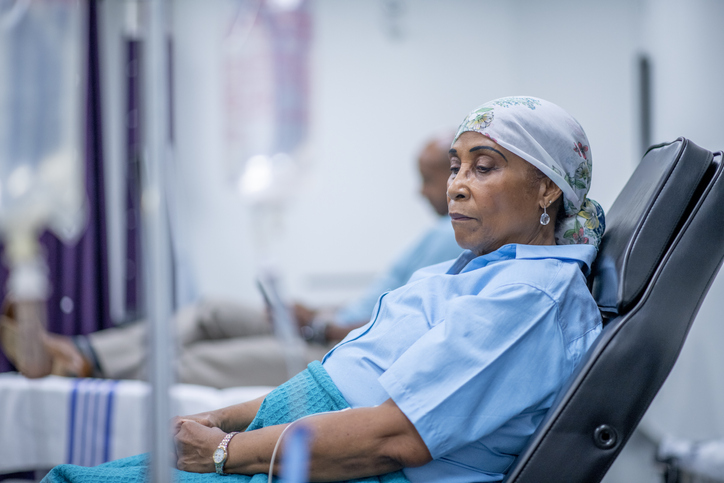
This year marks the 20th anniversary of the landmark Unequal Treatment report from the Institute of Medicine (now the National Academies of Medicine). Unequal Treatment put a spotlight on the treatment that racial and ethnic minorities received within the U.S. healthcare system and the poorer outcomes they frequently experienced compared to their White counterparts. While there has been some positive movement over the years, including increased numbers of insured patients with access to providers via the Patient Protection and Affordable Care Act (ACA) and its associated health plans and Medicaid expansion, we have not seen the level of improvement that we would have hoped for.
The ACA greatly increased the number of persons with insurance coverage. According to a 2021 Health Affairs article, a record 31 million people were enrolled in ACA marketplace or Medicaid expansion plans. And in recent years, especially since the COVID-19 pandemic, there have been renewed efforts to address inequities in the social determinants of health and within healthcare. However, despite these gains, the last 20 years have also yielded numerous studies which identify, describe, and quantify inequities experienced by racial and ethnic minorities. For example, a 2021 study published in the American Journal of Public Health reported that the maternal mortality rate for non-Hispanic Black women was more than three times the rate for non-Hispanic White women. Whether considering maternal mortality, cardiovascular disease, cancer, or many other conditions, Black and Hispanic individuals often bear a disproportionate disease burden, and/or have worse outcomes and higher mortality.
Staying with the theme of maternal health, the 2022 National Healthcare Quality and Disparities Report from the Agency for Healthcare Research and Quality shows that between 2016 and 2019, the rates of deliveries with severe maternal morbidity actually increased for both Hispanic individuals (from 7.1 to 8.2 per 1,000 deliveries) and Black individuals (from 11.3 to 12.3 per 1,000 deliveries). Severe maternal morbidity refers to unexpected outcomes of labor and delivery that result in significant short- or long-term consequences to a woman’s health.
“The maternal mortality rate for non-Hispanic Black women was more than three times the rate for non-Hispanic White women.”
––American Journal of Public Health, 2021
We know from Unequal Treatment and multiple other sources (Healthy People 2030 and Williams et al, 2019) that many factors contribute to health inequities, including social determinants or drivers, structural racism, and bias. Despite these deep-rooted systems and the bleak numbers attesting to the persistence of disparate outcomes, many organizations are actively and aggressively fighting to improve outcomes for groups that have been historically disadvantaged. Medtech companies have a renewed interest in health equity, including raising awareness around access barriers and increasing clinical trial representation to more accurately reflect the demographics of the United States. The Food and Drug Administration, the regulatory agency that must approve all new pharmaceuticals and medical devices, is expected to issue new guidance later this year to improve enrollment from underrepresented groups in clinical trials. With better racial/ethnic representation in clinical trials, manufacturers can have greater confidence that they are developing products that are effective in the diverse U.S. population.
These organizations, and numerous others, are working toward the elimination of health inequities and the achievement of health equity, where all people have the potential to attain their highest level of health. But everyone must continue to think outside the box and conceptualize what else we can do to start seeing significant and sustainable improvement. It is because inequities, and their contributing factors, are so complex that resolution will take everyone, including industry, healthcare providers/systems, researchers, funders, medical education, policy makers, regulatory agencies, grass-roots organizations, advocates, and others across the country who are striving every day within their spheres of influence. Cross-sector collaborations and partnerships are also important; organizations must work together to amplify current strategies that have demonstrated success and bring them to scale.
These are some additional strategies to consider, as your organization is able:
- Greater financial investments in community-based organizations and grass-roots organizations with “boots on the ground.” These organizations can play a critical role for individuals and families with urgent social needs, such as food insecurity.
- Greater investment and building long-term presence within marginalized communities, as a demonstration of commitment (e.g., to avoid “helicopter research” in which an entity flies into a neighborhood, collects what it needs, and then flies out).
Finally, another approach that deserves more attention is increased focus on the social determinants of health, a primary contributor to the existence of inequities. Healthy People 2030 acknowledges this, calling out the need to address health inequities upstream. While it is challenging enough to address inequities downstream (e.g., at the point of care), it can be even more daunting to ponder how to effect change upstream. How do we influence or change policies that impact social determinants, and therefore health, such as those around education, housing and employment? Such issues may not be within our own spheres of influence, but this is where we must think creatively about partnerships and investments with other organizations that can and are making a more direct impact. Granted, this may not be easy. It will take a mighty effort, not to mention resources, and the return on investment may not be immediately apparent. However, what is apparent is that our current approaches are not working, at least not enough to substantially move the proverbial needle.
AdvaMed® and the medtech industry are committed to the pursuit of health equity. We welcome the opportunity to explore partnerships with any organization, especially those that share our values and principles regarding the achievement of health equity. With the support of our members and other stakeholders, it is our hope that the next 20 years will yield more measurable progress towards a healthcare system where everyone can thrive and achieve their highest level of health.
Learn more about Health Equity.
Hear Patient Stories
The Story of Medtech empowers patients to share their experiences with medical technology in an effort to educate, inspire, and create community.